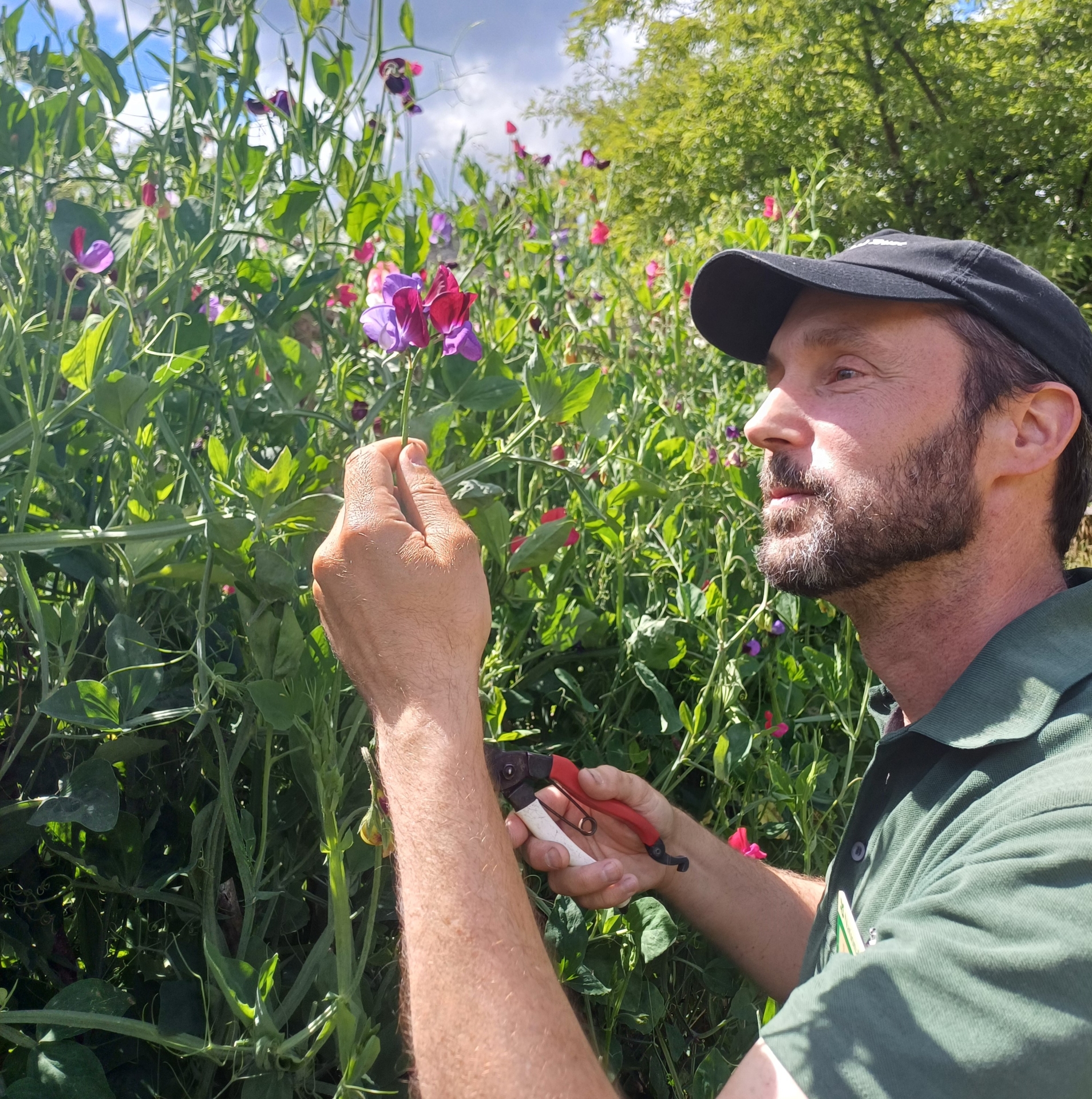
Sam Brown. Image credit: National Trust Buckland Abbey
Buckland Abbey, the former home of Sir Francis Drake and now a National Trust site, boasts a team dedicated to preserving its historic grounds.
Leading this effort is Head Gardener Sam Brown, who lives on the Buckland Estate.
Speaking of his closeness to work, Sam said: “It does mean that I can come out late in the evening and pick the slugs and snails off!”
Sam's journey into gardening began around 15 years ago as a career change from his previous roles as a cinema projectionist and coffee shop supervisor.
After studying Horticulture at Bicton College in East Devon, he secured a training placement with the National Trust at Knightshayes Gardens.

This opportunity led to a nearly decade-long tenure at Knightshayes, where he honed his skills before taking on the position at Buckland Abbey three years ago.
Sam shares the history of Buckland Abbey's gardens: originally maintained by Cistercian monks, the grounds have evolved significantly over the centuries.
The monks cultivated farms, orchards, and vegetable and herb gardens, possibly including small ornamental ‘paradise’ gardens for contemplation and reflection.
During the Tudor period, the Abbey's transformation into a private home brought about more formal domestic gardens.
Sam said: “While we have no images or records of the gardens until the 1700s, we can see at this time that a pre-existing formal area with a pond and flower beds was taken out to make room for a more ‘English Landscape’ with open grassed areas, specimen trees and shrubberies.”
Today, Buckland Abbey's gardens are modern, having been replanted post-World War II when the National Trust acquired the property.
The current garden areas, including the herb garden, shrub borders, kitchen garden, and newly reinstated formal rose garden, reflect a blend of historical suggestion and modern planting.
Upon his arrival at the Abbey, one of Sam's initial projects was revitalising the walled kitchen garden.
This productive heart of the gardens houses a small glasshouse where annual vegetables and flowers are raised, and summer cuttings are propagated.
He said: “For most of the year, I head to the glasshouse first thing to check on these young plants and get the watering done early.”
With a small team of staff and volunteers, Sam's days are filled with hands-on gardening, project planning, and administrative tasks.
He said: “I like to be as hands-on as possible.”
Seasonally, the work varies: winter involves mulching, clearing, cutting back, and pruning; spring focuses on nursery work and planting out; and summer is dedicated to weeding, deadheading, harvesting crops, and mowing.
Balancing historical integrity with modern techniques is a key challenge.
Sam said: “The gardens need to move forward and be fresh and exciting, but be respectful and in keeping with the Abbey's architecture.
“I feel that the gardens and grounds have a very peaceful and relaxed atmosphere, and while there is formality there is also a looseness and playfulness. Because there is very little in terms of old planting records, and because the gardens have been through so many changes over the centuries, we do have a certain freedom to experiment and incorporate new ideas.”
Climate change presents a significant challenge, with long hot summers and very wet winters affecting plantings.
Historical issues like honey fungus also pose problems.
Sam believes that improved soil health is crucial: “Healthy soils are less compacted, with better drainage, and are less prone to flooding and waterlogging.”
One of Sam's most rewarding projects has been the restoration of the historic 18th-century walled kitchen garden.
Previously closed off to the public until 2023, it now features new productive vegetable beds, fulfilling Sam's passion for kitchen gardening.
Among his favourite plants are roses, particularly in the Elizabethan Garden, which is being transformed into a dedicated rose garden.
Inspired by a National Trust rose conference, Sam plans to introduce more varieties, including climbing and rambling roses.
Sam keeps up with the latest gardening trends and techniques through social media and visits to other gardens.
He said: “Social media is a great tool for following what other gardeners and designers around the country are up to.”
For Sam, the most fulfilling aspect of his job is the opportunity to work in such a historic and diverse garden.
Sam said: “Taking on such a historic garden around the Abbey building with so many centuries of history is a huge honour. There is also so much scope to redesign areas and take the gardens forward, and that is really fulfilling for any gardener.”
In Sam’s opinion, one of the garden's most distinctive features is the herb garden.
A formal space with 40 sections, each dedicated to a different herb, divided by low parterre hedging of red and green Berberis.
The garden focuses on edible, culinary herbs used by the on-site café and for special Tudor cooking events in the Abbey kitchens.
Looking ahead, Sam is now currently planning on getting more roses including old and modern varieties and specifically more climbing and rambling roses to train on all the walls.
Subscribe or register today to discover more from DonegalLive.ie
Buy the e-paper of the Donegal Democrat, Donegal People's Press, Donegal Post and Inish Times here for instant access to Donegal's premier news titles.
Keep up with the latest news from Donegal with our daily newsletter featuring the most important stories of the day delivered to your inbox every evening at 5pm.